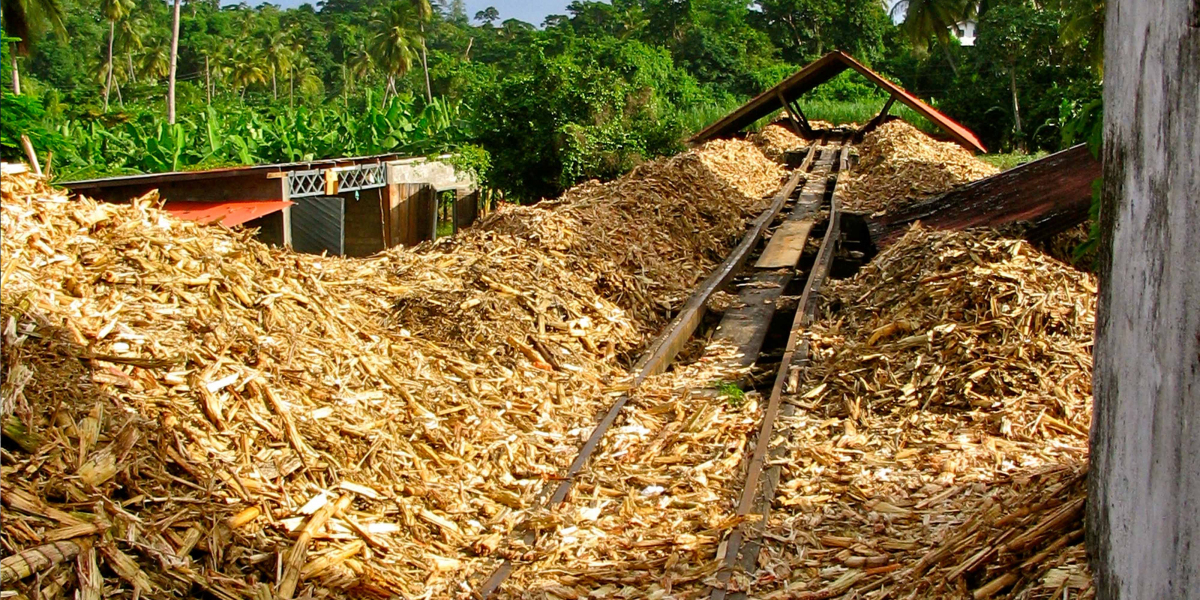Introduction
Bagasse, a fibrous byproduct of sugarcane processing, was once considered a useless agricultural waste. Traditionally, it was burned or left to decompose in the fields, contributing to environmental pollution and underutilization of resources. However, over the past few decades, bagasse has undergone a significant transformation, evolving into a valuable raw material used in a variety of industries. This article explores the journey of bagasse, its transformation into everyday products, and its impact on sustainability. Additionally, we’ll examine the rise of eco-friendly bagasse products, such as those made by companies like Growood, in India and around the world.
Understanding Bagasse
Bagasse is the fibrous residue left after sugarcane stalks are crushed to extract their juice. For every ton of sugarcane processed, approximately 250 to 300 kg of bagasse is generated. The composition of bagasse includes cellulose, hemicellulose, and lignin, making it a natural source of fiber.
Historically, the main method of disposing of bagasse was burning it as a cheap fuel for sugar mills, which contributed to air pollution and wasted its potential as a renewable resource. With the rise of environmental awareness and technological advancements, the focus shifted from simply disposing of bagasse to finding ways to reuse and recycle it.
Early Uses of Bagasse: Paper and Fuel
The first major use of bagasse, outside of its role as fuel, was in the paper industry. The cellulose-rich material in bagasse made it an attractive alternative to wood pulp for paper production. Bagasse paper is not only renewable but also requires less energy and water to produce compared to traditional paper.
Another early use of bagasse was in biofuel production. Bagasse is rich in cellulose, which can be converted into ethanol, a clean-burning biofuel. In countries where sugarcane is a major crop, such as Brazil and India, bagasse has been used to generate electricity and produce bioethanol, reducing dependence on fossil fuels and contributing to cleaner energy solutions.
The Shift to Biodegradable Products
As the global movement towards sustainability gained momentum, innovators began exploring new ways to repurpose agricultural waste like bagasse. The discovery that bagasse can be molded into various shapes led to its use in the manufacturing of biodegradable products. This was a significant shift in how bagasse was perceived – from being just a byproduct to becoming a valuable resource for creating sustainable alternatives to plastic and Styrofoam.
The most prominent area where bagasse found its place was in the production of disposable tableware and packaging. Bagasse is now widely used to produce plates, cups, bowls, and food containers. These products are fully biodegradable and compostable, breaking down in a few months without leaving harmful residues, unlike their plastic counterparts that can take hundreds of years to decompose.
One of the major advantages of using bagasse for disposable products is its durability. Bagasse-based products are not only heat-resistant but also water-resistant, making them suitable for both hot and cold food. This quality makes them a perfect replacement for single-use plastic, especially in the food and beverage industry.
Bagasse in Construction and Materials Industry
Beyond disposable tableware, bagasse has also made inroads into the construction industry. Researchers have developed new materials by mixing bagasse with other natural fibers and resins, producing composite materials that are strong, lightweight, and environmentally friendly. These materials are now used to make fiberboards, which serve as an alternative to wood in furniture manufacturing, reducing the need for deforestation.
Another innovative use of bagasse is in the production of bio-based plastics. By breaking down the cellulose in bagasse, scientists can produce bio-polymers that can be molded into various forms. These bio-based plastics are biodegradable, offering a sustainable alternative to conventional petroleum-based plastics.
The Role of Bagasse in Circular Economy
The concept of the circular economy emphasizes minimizing waste and maximizing resource efficiency. Bagasse plays a crucial role in this paradigm by turning agricultural waste into valuable products, reducing the environmental footprint of industries.
In a circular economy, waste materials are continually reused, and bagasse fits perfectly into this model. By repurposing bagasse into paper, biofuels, tableware, and construction materials, industries are closing the loop on sugarcane production, ensuring that no part of the plant goes to waste. This not only boosts economic efficiency but also reduces environmental degradation caused by waste disposal and plastic pollution.
Growood: A Pioneer in Eco-Friendly Bagasse Products in India
In India, where sugarcane is a major agricultural product, companies like Growood have emerged as leaders in the production of eco-friendly bagasse products. Growood's range of bagasse-based tableware and packaging solutions is helping reduce the nation's reliance on plastic and other non-biodegradable materials. By offering products that are both sustainable and practical, Growood is playing a pivotal role in India's efforts to combat plastic pollution and promote environmental responsibility.
Growood is known for creating durable, high-quality bagasse products that are not only eco-friendly but also affordable, making them an attractive option for both consumers and businesses. The company's commitment to sustainability aligns with global trends toward reducing single-use plastics and adopting greener alternatives.
Environmental Impact and Future Potential
The environmental benefits of using bagasse in manufacturing are clear. For one, it reduces the need for petroleum-based plastics, which are a major contributor to pollution and greenhouse gas emissions. By using bagasse to make biodegradable products, industries can significantly reduce their carbon footprint.
Moreover, the use of bagasse in biofuel production and energy generation helps reduce the reliance on fossil fuels, further contributing to climate change mitigation efforts. The future potential of bagasse lies in its ability to be an integral part of sustainable practices across various industries.
Ongoing research is exploring new ways to enhance the usability of bagasse. For instance, scientists are working on improving the strength and versatility of bagasse-based materials to make them more competitive with conventional plastics and wood products. Additionally, efforts are being made to streamline the processing of bagasse to make it even more energy-efficient and cost-effective.
Conclusion
The evolution of bagasse from agricultural waste to a valuable raw material is a testament to the power of innovation in driving sustainability. What was once discarded as a byproduct of sugarcane production is now a key component in various industries, from paper and biofuels to biodegradable packaging and construction materials.
Companies like Growood are leading the way in India, offering eco-friendly bagasse products that help reduce plastic waste and promote a circular economy. The future of bagasse looks bright as more industries recognize its potential to replace non-renewable materials and contribute to a greener, more sustainable world.
By embracing bagasse and continuing to innovate its uses, we can make significant strides toward reducing our environmental impact and moving closer to a zero-waste future.









